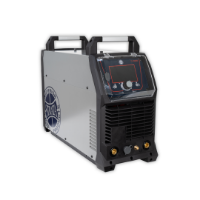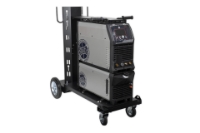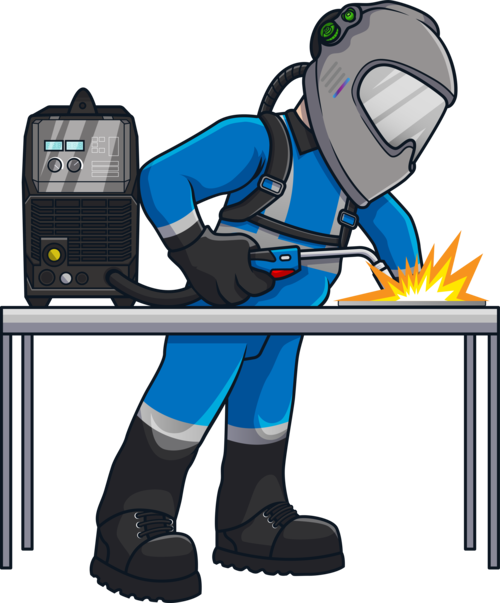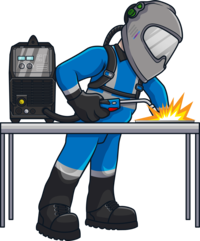Table of Contents
.jpeg)
Welding aluminium is an essential skill across many industries, yet even experienced welders often find it one of the most challenging materials to master. Its unique properties—lightweight strength, high thermal conductivity, and rapid oxidation—make it different from welding steels or other metals. Aluminium welding can quickly become frustrating without the proper techniques and equipment.
However, the correct approach, combined with advanced technology like the Strata AdvanceTig400ACDC 400a Three Phase TIG/ARC Inverter Welder, can significantly simplify the process. This article explores the everyday challenges of aluminium welding and how the AdvanceTig400ACDC offers the solutions needed for superior results in New Zealand workshops.
Why Welding Aluminium Is Different
At first glance, aluminium might seem straightforward to weld, given its widespread use in vehicles, construction, and marine applications, but it demands a specialised technique. The oxide layer naturally forming on aluminium’s surface is a significant factor. This aluminium oxide has a melting point of over 2,000 degrees Celsius—much higher than the metal beneath it. Welding without properly addressing this layer often leads to poor fusion and weak joints.
Moreover, aluminium’s excellent thermal conductivity can work against the welder. Heat spreads rapidly through the material, making establishing and maintaining a stable weld pool difficult, particularly on thicker workpieces. The metal’s softness when heated also increases the risk of burn-through if parameters are not controlled precisely.
Another common issue is porosity, as aluminium absorbs hydrogen. If the metal, filler rods, or shielding gas are contaminated, molten, trapped gas bubbles can create weak, porous welds. For these reasons, aluminium demands a careful and methodical approach.
Preparation: The First Step to Success
Achieving strong, clean aluminium welds begins long before striking an arc. Proper surface preparation is essential. The oxide layer must be removed mechanically, using a stainless-steel brush reserved exclusively for aluminium, or chemically, with a dedicated cleaner like acetone. Every surface that will be welded—including filler rods—should be cleaned to avoid contaminants in the weld pool.
Good joint fit-up is equally essential. Tight, consistent gaps promote better weld penetration and reduce the chances of excessive heat input, which could otherwise warp or burn through the material.
Storage conditions also play a role. Aluminium should be kept dry and clean, away from moisture, oils, and airborne contaminants, and ideally welded soon after preparation.
Choosing the Right Process and Technique
TIG (Gas Tungsten Arc Welding) is preferred for most aluminium applications because it offers greater control and produces cleaner welds than other methods. Using alternating current (AC) during TIG welding is crucial, as it combines the cleaning action needed to remove oxides with effective heat input into the workpiece.
Fine-tuning the AC balance—adjusting how much time the arc spends cleaning versus heating—can dramatically improve weld quality. Similarly, a high AC frequency focuses the arc more tightly, providing better control and penetration on thinner materials.
Technique matters as well. Welders must maintain a short arc length and steady torch angle to keep the shielding gas coverage consistent. Feeding the filler material carefully into the leading edge of the weld pool avoids contamination and maintains weld integrity.
Pure argon is the standard shielding gas for aluminium TIG welding. Gas flow rates should be set correctly to protect the molten pool without causing turbulence, which could introduce air and lead to porosity.
Why Equipment Quality Matters
Even the most skilled welder can struggle without the right machine. Aluminium’s unique properties place high demands on welding equipment, particularly regarding arc stability, output control, and duty cycle.
Machines that can deliver AC and DC, maintain consistent output at high amperages, and offer precise settings for AC balance, frequency, and pulse control are critical for reliable aluminium welding. Ease of operation, memory storage for settings, and reliable start functions are valuable features, particularly when welding different aluminium alloys or thicknesses. This is where the Strata AdvanceTig400ACDC stands out as a top choice for professional welders.
Introducing the AdvanceTig400ACDC
Designed for demanding environments, the AdvanceTig400ACDC offers 400a of reliable welding power, making it ideal for workshops handling everything from thin sheet aluminium to heavy industrial fabrications. Its three-phase design and IGBT inverter technology provide a stable, efficient output, even under heavy loads.
Key features that make it ideal for aluminium include:
AC/DC Capability: Essential for aluminium TIG welding, the machine provides various AC waveforms—sine, square, triangle, and mixed—allowing welders to tailor the arc to their project needs.
Smart Controls: The full-colour LCD and Smart Set Synergic Mode simplify setup by recommending settings based on material type and thickness. Welders can also store up to 20 job-specific memories, saving time and improving consistency.
Pulse Welding: The ability to pulse the current up to 999Hz gives welders control over heat input, helping to prevent distortion on thin materials while improving arc focus and weld bead appearance.
Water-Cooled Torch Option: Supplied with an 8-metre PRO18 water-cooled TIG torch, the AdvanceTig400ACDC supports heavy-duty welding sessions without overheating, which is crucial for aluminium applications that require sustained high currents.
Industrial Durability: Rated IP23 for resistance to dust and moisture, and equipped with an innovative cooling system, the welder is designed to perform reliably in challenging workshop environments.
Safety and Protection: Built-in features such as phase loss protection, surge protection, and active PFC (Power Factor Correction) ensure safe and stable operation, whether powered by the mains or a generator.
Click HERE for detailed specifications or to view the AdvanceTig400ACDC product.
Best Practices for Aluminium Welding
Even with the right equipment, successful aluminium welding depends on applying sound techniques:
Control Heat Input: To avoid excessive heat, use higher travel speeds, smaller weld pools, and pulsing where necessary.
Use Correct Tungsten: Pure or Ceriated tungsten is generally recommended for AC TIG welding aluminium. Proper preparation of the tungsten tip helps ensure a stable arc.
Shielding Gas Integrity: Regularly check gas hoses and fittings for leaks and ensure the shielding gas flow is adequate but not excessive.
Maintain Cleanliness: Regularly clean torch components and replace consumables like gas lenses and nozzles as needed.
Practice Proper Safety: Wear appropriate PPE, including a high-quality welding helmet, gloves, and flame-resistant clothing. Adequate ventilation is essential, particularly when welding indoors.
By following these practices, welders can minimise defects like porosity, cracking, and distortion while achieving stronger, more visually appealing welds.
Maintenance for Long-Term Reliability
The AdvanceTig400ACDC is built for durability, but regular maintenance ensures peak performance. Simple steps include:
- Blowing out vents periodically to prevent dust buildup.
- Checking coolant levels in the water-cooling system.
- Inspecting cables and connections for wear.
- Replacing worn torch parts before they cause arc instability.
- Verifying calibration periodically for precise output.
Taking the time to maintain equipment adequately protects your investment and safeguards the quality of every weld produced.
Aluminium welding presents unique challenges, but with the proper preparation, techniques, and equipment, those challenges become opportunities to deliver superior workmanship. The Strata AdvanceTig400ACDC combines the power and precision to weld aluminium effectively in high-demand environments. Advanced features like AC waveform control, synergic settings, high-frequency pulse, and industrial-grade construction empower welders to tackle any aluminium project confidently.
Ready to take your aluminium welding to the next level? Discover the full capabilities of the AdvanceTig400ACDC by visiting Proline Industrial today or speaking with the Proline team for expert advice. Equip yourself with the best—and weld with confidence.
















































